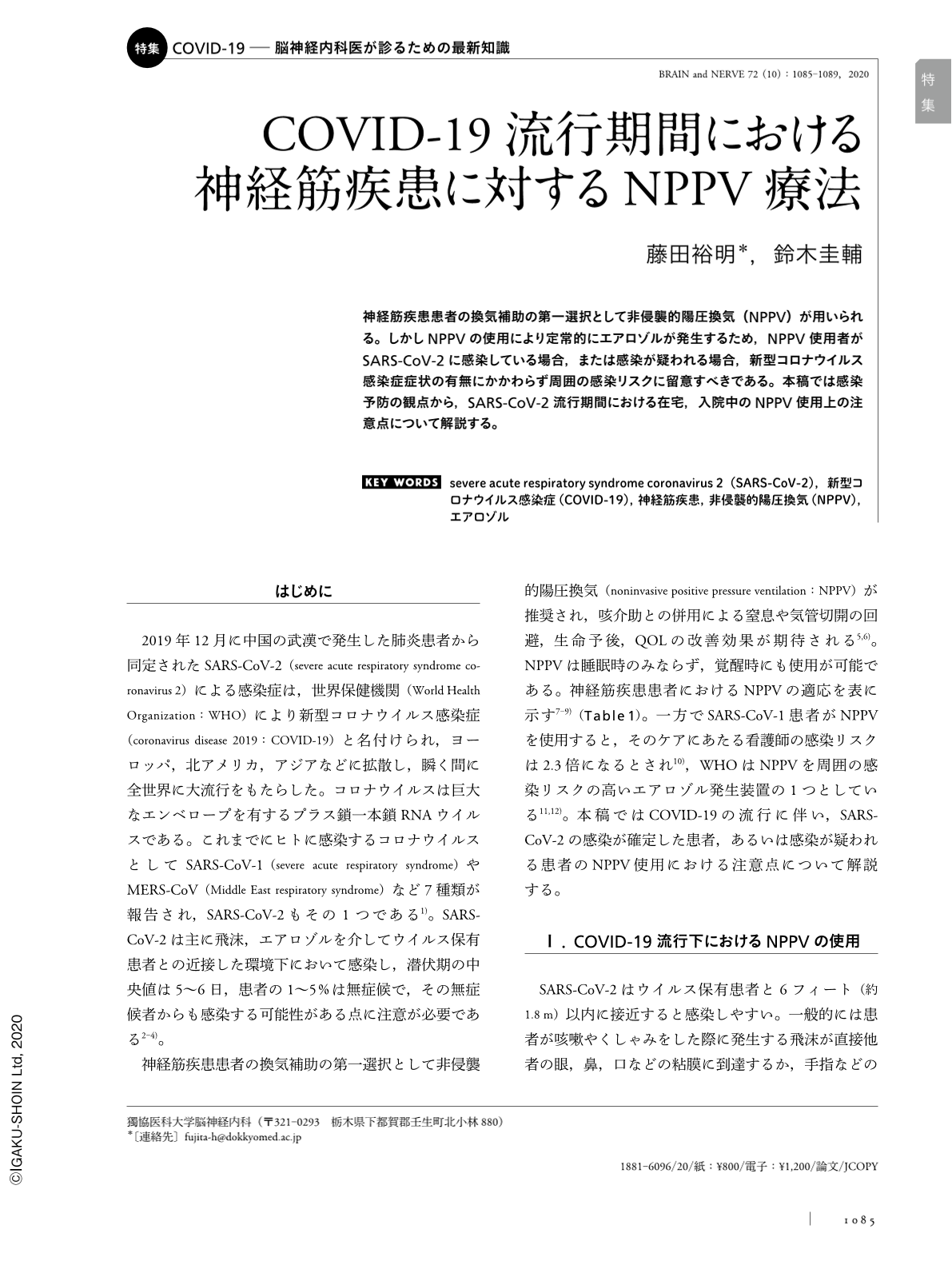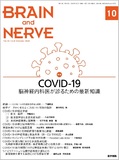Japanese
English
- 有料閲覧
- Abstract 文献概要
- 1ページ目 Look Inside
- 参考文献 Reference
神経筋疾患患者の換気補助の第一選択として非侵襲的陽圧換気(NPPV)が用いられる。しかしNPPVの使用により定常的にエアロゾルが発生するため,NPPV使用者がSARS-CoV-2に感染している場合,または感染が疑われる場合,新型コロナウイルス感染症症状の有無にかかわらず周囲の感染リスクに留意すべきである。本稿では感染予防の観点から,SARS-CoV-2流行期間における在宅,入院中のNPPV使用上の注意点について解説する。
Abstract
A novel coronavirus, severe acute respiratory syndrome coronavirus 2 (SARS-CoV-2), emerged from Wuhan in December 2019 and resulted in a severe outbreak of pneumonia (COVID-19). SARS-CoV-2 is transmitted through respiratory droplets produced by coughs or sneezes, as well as aerosols containing viral particles. Noninvasive positive pressure ventilation (NPPV) is widely used to support respiration in patients with neuromuscular diseases. However, NPPV is also an aerosol-generating procedure. Without appropriate precautions, the risk of spreading the virus is high in NPPV users infected with SARS-CoV-2. At home, self-quarantine is effective in protecting caregivers of patients using NPPV, whereas in hospitals, using a negative pressure room is preferred. As SARS-CoV-2 can survive on surfaces for several days, disinfecting the NPPV machine and the items frequently touched in the room is essential. Setting viral filters is useful for preventing virus transmission and keeping the inside of the NPPV machine clean. Caregivers must wear appropriate personal protective equipment. Furthermore, it should be paid attention to the potential transmission from asymptomatic SARS-CoV-2 carriers. During the current pandemic, it is necessary to minimize the risk of transmission among patients using NPPV.

Copyright © 2020, Igaku-Shoin Ltd. All rights reserved.


